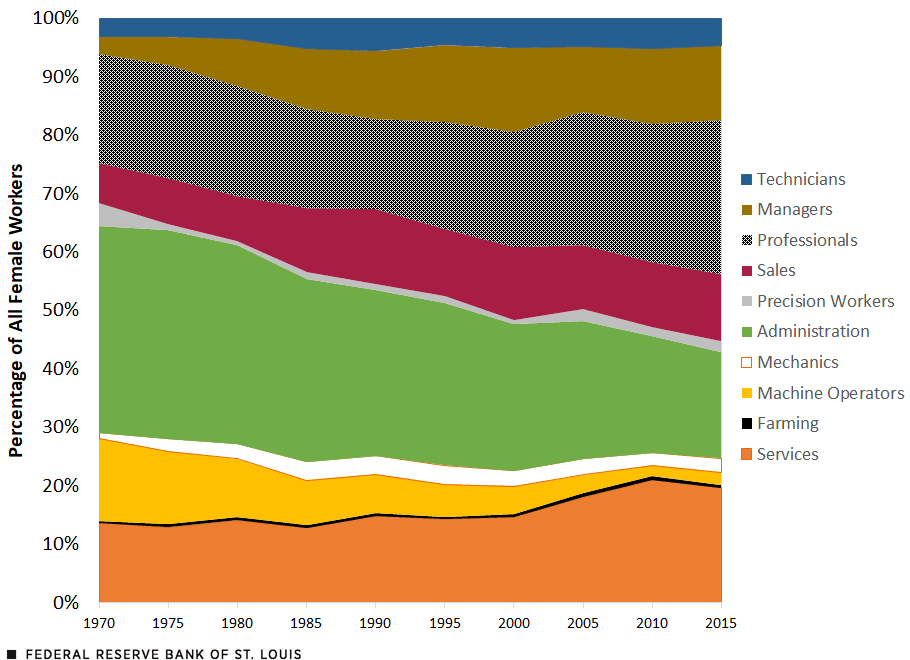By Oksana Leukhina & Amy Smaldone. They are both with the St. Louis Fed. Excerpts:
"Greater Shares of Women Moved into Higher Wage Growth Occupations
How exactly workers allocate their on-the-job hours between simply doing the job and investing in their future productivity is not something that we can measure directly. However, we can look at the type of jobs held. Some jobs/occupations involve a lot of training early on and exhibit steep wage growth over the life cycle (e.g., physicians start as medical residents, spending most of their time training).
What we show next is that women indeed increasingly sorted into occupations that involve more training early on and more wage growth over time—such occupations also exhibit higher average wage levels.
The fifth and final figure (below) shows how the distribution of working women across 10 broadly defined occupations evolved over time. We are looking at women in the beginning of their careers (in their late 20s). The occupations (top to bottom) are ranked according to the average male wages in 2015, with technicians, managers and professionals having the highest average wages that year, and machine operators and those in farming and services ranking near the bottom of the pay distribution.
Female Workers in Each Occupation

SOURCES: U.S. Census, Current Population Survey and authors’ calculations.
NOTES: For each year, the figure represents the distribution of 26- to 30-year-old working women across 10 occupations. The occupations are ranked (top to bottom) by the average wage among 36- to 40-year-old men in 2015, with technicians, managers and professional workers having the highest-average wages that year.
In 1970, women entered into lower-paying occupations, working predominantly in administrative jobs. Over time, women clearly shifted toward better-paying occupations. For example, we see that the percentage of women working in the professional occupations went up from about 19% in 1970 to about 26% in 2015. The fraction of women working in the top four high-paying occupations increased from around 30% to 55%.
This evidence provides additional support for the main hypothesis that, as women increased their labor force attachment and as young women planned to work more over their life cycles, they increasingly entered career tracks that involved more training early on and higher wage growth over time, thereby narrowing the gender pay gap."
No comments:
Post a Comment
Note: Only a member of this blog may post a comment.